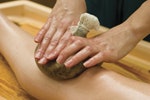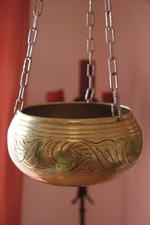With increasing consumer awareness on what a spa lifestyle entails, as well as demand for various wellness-enhancing treatments, the Indian spa market is booming. Indian spas have come a long way. Starting out primarily as ayurvedic therapy centers treating ailments and catering to foreign tourists, today Indian spas are targeting consumers with a blend of local and international treatments and therapies that promote the concept of wellness as a lifestyle. In the last three years, the Indian spa industry has made progressive gains, and it is now attracting international spa brands interested in either setting up a direct spa presence in India or collaborating
The key reason for this growth is the more mature Indian consumer. Due to global exposure and an amalgamation of Indian and Western culture, Indian buyers are aware of beauty and wellness trends and have started demanding such solutions from their spas and beauty service providers. Wellness is no longer just an aspiration; it is fast becoming an affordable lifestyle. Spas of various kinds, whether specialty spas, day spas or other types of spas, have started popping up in the major metropolitan cities across the country—namely Delhi, Mumbai, Bangalore, Chennai and Kolkata.
According to Carina Chatlani, chairperson of the Spa & Wellness Association of India, Indian society’s views about wellness have changed drastically. The people have become more conscious of looking groomed and fit, and more people in the country’s major cities now see spa therapies and facilities as a way to better lifestyle management.
Not only are Indian consumers going to various spas within their own cities, but they are also traveling within India, as well as to other global destinations, to take wellness vacations. Due to economic growth, the spending power of the Indian consumer has increased many times over as of late, and they do not deter from spending money on looking good. There is a rising demand for exclusive and customized beauty and wellness services that only spas can offer, such as exclusive massages and head-to-toe treatments suited to an individual’s particular body type.
And along with the country’s booming corporate sector, a new kind of spa client is emerging: the business traveler. From both within India and worldwide destinations, these clients typically travel in the country as part of their jobs and head to wellness centers as a way to relax outside of the office.
According to Sanjay Malik, MD, managing director of FitPlaza, a Dutch day spa brand that has opened a location in Gurgaon, a satellite town near Delhi, though 70% of Indian spa clientele is still women, there is an increasing number of male clients, especially in the high-income group, who have begun trying various treatments. In fact, the number of spa-going men has increased by 80% each year for the past two years, and according to an estimate by the Indian Spa Professionals Association, the entry of male customers into spa and wellness centers is expected to increase by almost 80% in the coming year as well.
Chatlani says that highly health- and beauty-conscious clients fall in the 25–45 age range and about 69% of the population in the country’s major metropolitan cities are potential spa-goers.
Demand for day spas
Until recently, India was seen as a destination spa country that catered to foreign tourists. And while its destination spas continue to flourish, newer types of spas that fulfill the needs of local consumers, as well as global business travelers, are becoming more and more popular.
The day spa has emerged as a concept that has grown greatly in the recent past. The reason behind this rise is that consumers do not want to travel and spend large amounts of time at a spa in order to receive wellness therapies; the demand is for fast treatments that provide instant gratification. Thus, day spas have started appearing in major Indian cities in a big way. International brands such as Angsana and MSpa have either partnered with some of the country’s leading hotels or have created their own stand-alone spas in order to offer both day and destination spa packages for Indian clients.
“There is a big opportunity in the day spa market here,” Malik says. “Because more and more people have less and less time to spend, they are looking for customized therapies that can bring back wellness without spending days and weeks at a resort. Day spas offer that. We expect this market to double this year.”
The potential is so great that even destination spas such as Oberoi Spas by Banyan Tree, one of the country’s leading hotel chains, offers day spa treatments, such as kairali oil massages and shirodhara, or oil-based mind and body healing therapies, especially in its locations in India’s four major metropolitan cities. The other Oberoi Spas at tourist destinations such as Jaipur and Udaipur in Rajasthan and Mashobra and Shimla in the Himalayas are also offering specialty spa packages.

Of the popular therapies and treatments, Anita Bharatiya, manager of beauty services for one of the top Indian spas, Amatrra Spa in New Delhi, says, “In Indian spas, ayurveda is the basis of most of the treatments, whether it is aromatherapy or other herbal therapies. At Amatrra, we have used ayurveda and astroscience, a combination of astrology and astronomy, to evolve a spa regimen that is aimed to improve your lifestyle and sense of well-being.”
The spa customizes a regimen for every individual client by identifying the most beneficial therapies, ingredients, mantras and dietary prescriptions, and then prescribes aromas, colors and precious therapeutic gems for individuals based on their planetary diagnosis, explains Bharatiya.
“Amatrra Spa offers a synergistic blend of therapeutic and rejuvenation treatments based on traditional Indian ayurveda and Oriental spa rituals, complementing the best in the industry. The spa works on the holistic approach toward body, mind and soul,” Bharatiya says. “The different varieties of herbal products used have been sourced from traditional sources and processed at in-house production units to give an authentic, yet unique, touch.”
In fact, besides traditional ayurvedic treatments, some international therapies such as Balinese massage, Swedish massage, hot stone therapy, reflexology, Vichy showers, Turkish baths, and mud and color therapy have gained popularity in the country’s spa industry. Most day and destination spas offer a blend of traditional Indian beauty and wellness treatments alongside Oriental and European menu options.
Emergence of the medical spa
With the availability of affordable health and medical services, medical tourism is popular in India, and medical spas have become the logical extension of many health care service companies, or companies that run medical centers and hospitals across India. According to market estimates published by the Confederation of Indian Industries (CII), which is an industry body that tracks the Indian wellness and beauty market, about 15,000 foreign tourists have traveled to India, and in particular to ayurvedic therapy centers in Kerala, for medical, alternative healing and post-operative treatments.
The health care industry in India is about $200 million, according to CII estimates, and this provides an opportunity for recuperative health care service providers to offer spa therapies backed by medical treatments. For instance, Fortis, a leading health care service provider in India, has partnered with the U.S.-based MedSpa to offer similar spa services, such as physiotherapy, cosmetic surgery and anti-aging treatments, in its Delhi center, Fortis La Femme Centre for Women.
As of now, most medical spa treatments are offered by health care companies, and there is no separate licensing policy to run a medical spa, though there are single-licensing policies for all types of spas in India. Medical spas do, however, have trained physicians, surgeons and dermatologists who offer their treatments. There are also qualified Indian practitioners across the country who are setting up medical spas that offer noninvasive treatments.
The difference between these medical spas and regular health care centers is the ambiance. Medical spas offer traditional cosmetic medical treatments, such as cosmetic surgery, laser treatments, pain management therapies, anti-aging treatments and skin rejuvenation services, in a luxurious spa atmosphere. They combine medical treatments with alternate healing and wellness therapies, such as aromatherapy, sound therapy and color therapy. And in medical spas, the serious, businesslike mood of a medical facility is replaced by a warm and relaxed atmosphere of a spa while still maintaining the cleanliness and sterility of a medical facility.
Because most medical spa treatments are imported from the global market—the United States and a few European destinations in particular—the machines and devices used are very high-tech as compared to the regular methods typically used at the spas.
Growing salons into spas
Another interesting trend to note in the Indian spa market is the way traditional beauty salons, which typically offer only facials, manicures and pedicures, and some hair treatments, have started offering spa-like experiences with customized beauty treatments, as well as some popular massage options, as part of their menu selection.
Explaining the reasoning behind this, Suparna Trikha, an esthetician who runs a day spa called Suparna’s Aveda in New Delhi, says, “When women come here for beauty treatments, they are looking for something beyond regular facials. They want treatments that make them beautiful and are relaxing as well. So we offer regular beauty treatments along with some spa therapies, especially in the herbal treatments that we offer.”
The other main push behind this evolution is the fact that many women from mid-level income families do not have the money to pay what high-end day spas charge, but are still interested in partaking in the spa lifestyle. The beauty salons that are adding spa services offer similar treatments at more inexpensive prices. However, these facilities do not always provide the ambiance or high customization that a day or destination spa would offer.
The Indian spa market
While the boom is definitely happening and the Indian spa market is surely growing at a rapid pace, the Indian spa industry itself is far from being structured in terms of regulations and specific associations. The sector is yet to be organized, and there is no clear market study that indicates the potential of the Indian spa industry. However, Malik feels that, with the high rate of growth and interest the industry is generating in the global market, it is likely to become more organized in the next six to eight months.
Currently, there is growth potential in every facet of the spa industry. Because international treatments are in demand, spa product and solution providers are looking for buyers in India, and, similarly, international spa companies are looking for partners to set up their own spas.
Mumbai, for instance, is an upcoming market for spa operators. As the city is a tourist attraction from the hype of its Bollywood scene, many spa operators are building facilities there. South Indian locations such as Bangalore, Chennai and Kerala remain more traditional and still promote resort spas rather than day spas. However, commercial locations such as Delhi, Gurgaon, Chandigarh and Kolkata are also likely to see a proliferation of day spas.
With a growing market and client base, the fusion of traditional and modern treatment practices and the excitement local businesses are creating, India’s spa scene appears likely to stay booming well into the future.










